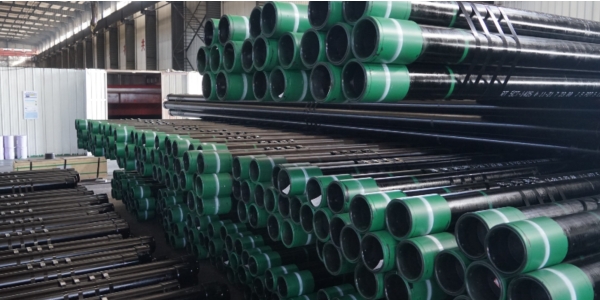During the drilling process, the drill pipe will cause serious impact and wear to the casing. If there is a problem with the casing string in the hole, it will cause serious accidents in the hole or even be scrapped. Therefore, the quality of the drilled casing must meet the following requirements.

1. Material requirements
The material of seamless steel pipe is generally selected based on parameters such as casing depth and quality. When selecting casing materials, the quality of the casing string should also be considered. When the mass of casing is less than 10t, ordinary low carbon steel grade can be used; if the casing mass is 10-20t, DZ40~DZ50 steel grade should be used; if the casing mass is≥20t, steel grade DZ50 or above should be used. In addition, the material of the casing joint should be one level higher than the steel grade requirement of the casing body.
2. Casing bending requirements
The curvature of the casing refers to the degree of bending of the casing in the length direction, expressed by the measured arc height of the maximum bend of the casing, and is divided into local curvature (mm/m) and full-length curvature (%). The general requirements for deep hole drilling are: casing diameter≤Φ89mm, partial curvature should be within the range of 1mm/1.5m; casing diameter >Φ89mm, local curvature should be within the range of 1mm/1m.
3. Requirements for casing ovality and wall thickness unevenness
The difference between the maximum and minimum outer diameters of a casing cross-section is called ovality (or out-of-roundness). It is generally stipulated that the ovality of the casing shall not exceed 80% of the outer diameter tolerance. The casing diameter is less than or equal toΦ89mm, and the ovality is controlled within 0.5mm; the casing diameter isΦ89mm or more, and the ovality is controlled within 1.0mm. The phenomenon that the cross section of the casing is different from the wall thickness of the longitudinal pipe body is called uneven wall thickness. The general rule is not to exceed 80% of the pipe wall thickness tolerance. The casing diameter is less than or equal toΦ89mm, and the wall thickness unevenness is controlled within 0.3mm; the casing diameter is >Φ89mm, and the wall thickness unevenness is controlled within 0.5mm.
4. Casing connection method and processing quality requirements
1) There are three types of casing connection methods: direct connection, flat seam connection and coupling connection. Generally speaking, when the casing mass is less than 10t, direct connection or flat seam connection is used; when the casing mass is greater than 10t, coupling connection is used.
2) Deep hole casing joints and coupling materials should be heat treated to improve their strength.
3) The center lines of the threads at both ends of the casing joint should coincide, and the coaxial deviation at both ends should not be greater than 0.25mm.
4) The thread standards for casing, joints and couplings mainly include geological core drilling standards and oil drilling standards. Oil pipe thread standards are often implemented in deep hole and large diameter geological core drilling.
5) The processing accuracy of casing, joints and coupling threads must be strictly in accordance with the corresponding specifications.
6) After the casing, joints and couplings are processed and formed, a standard inner diameter gauge should be used for through-hole inspection.
Click here to learn more: Oil Casing Pipe Manufacturing Process - Union Steel Industry Co.,Ltd

 English
English Español
Español




 Tel : +86-18565811709
Tel : +86-18565811709 Email :
Email : 

 News
News




